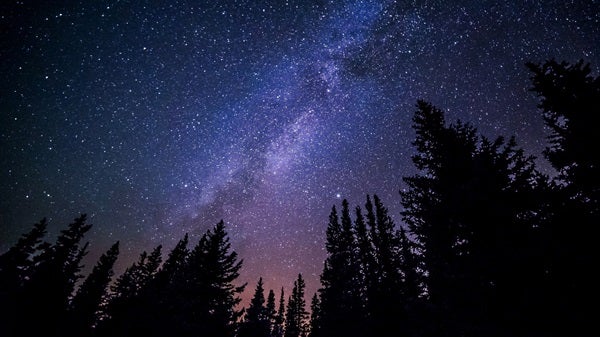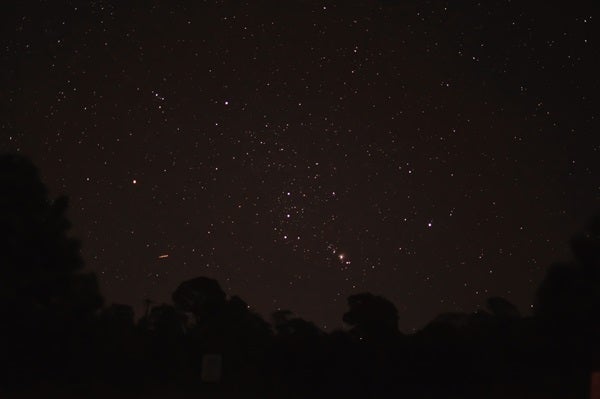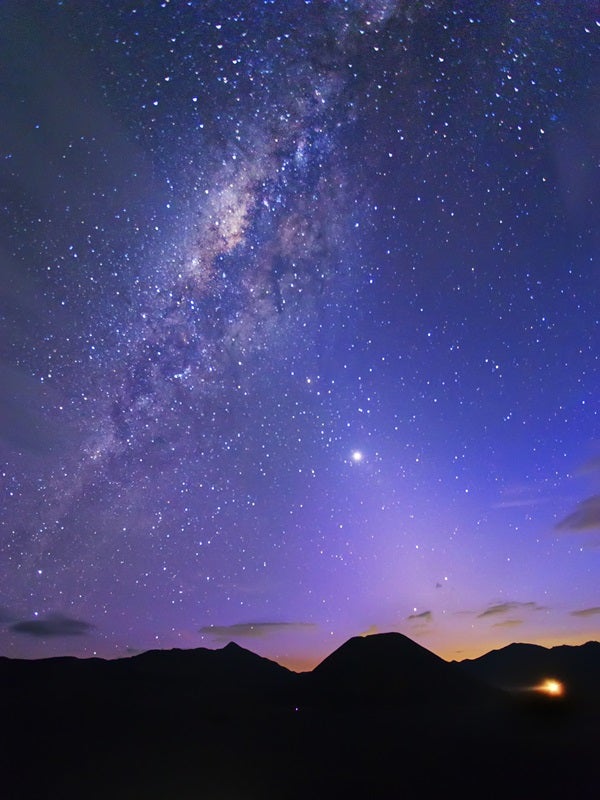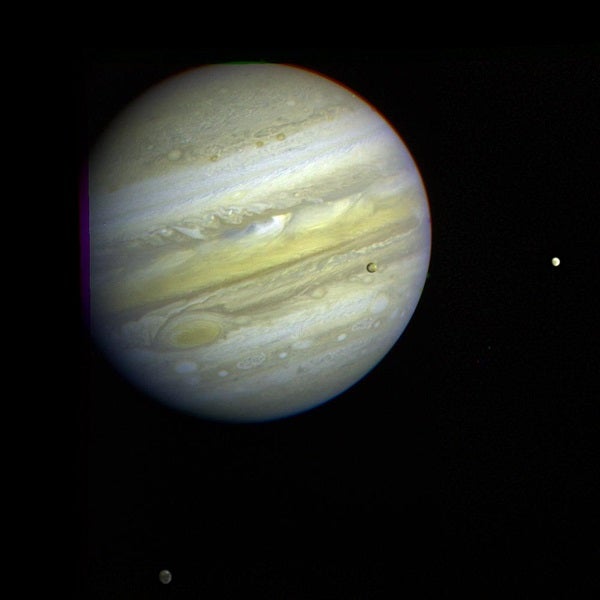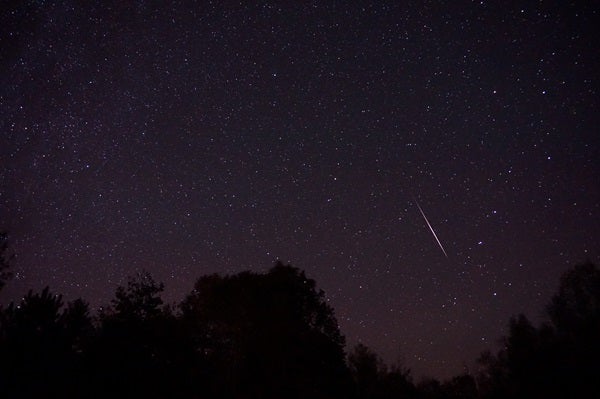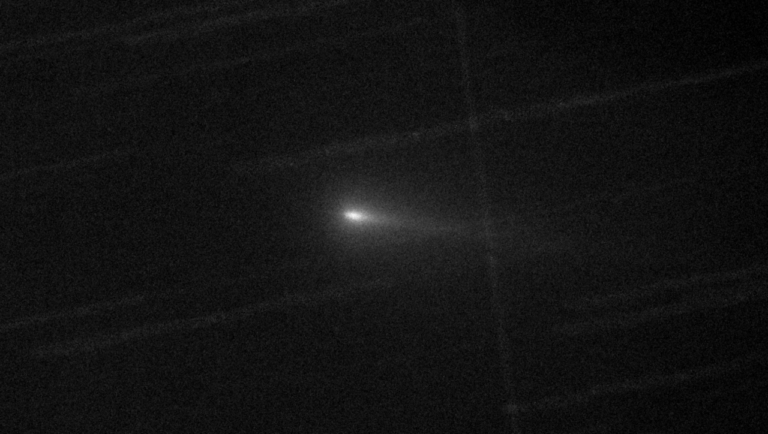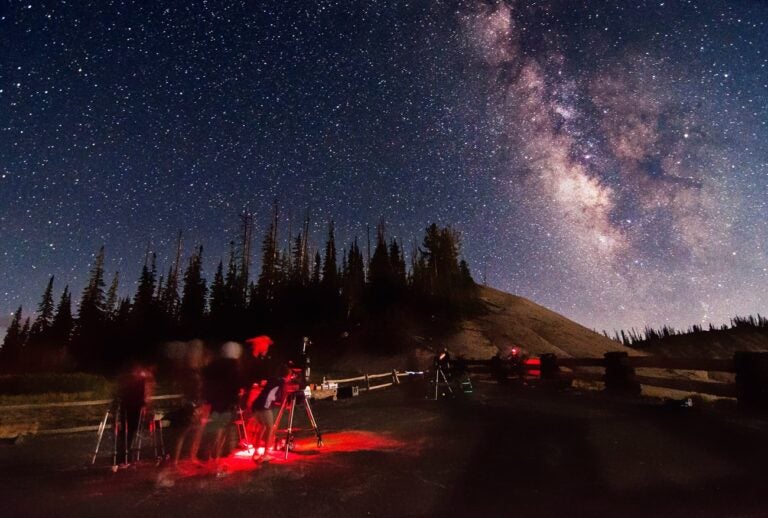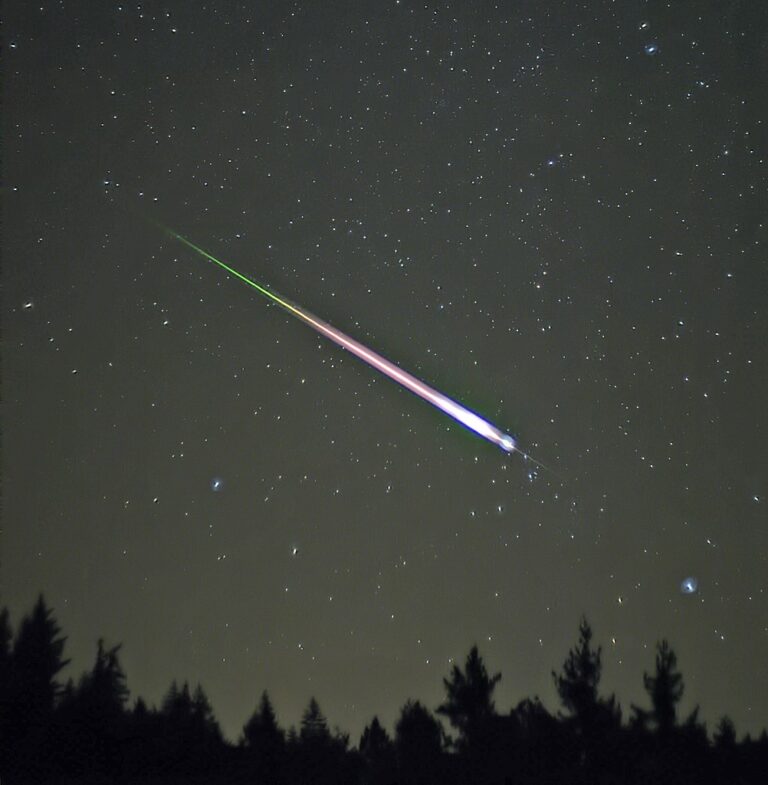The night sky’s most conspicuous harbinger of winter now rises in the east around midnight local daylight time. The constellation Orion the Hunter appears on its side as it rises, with ruddy Betelgeuse to the left of the three-star belt and blue-white Rigel to the belt’s right. As Orion climbs higher before dawn, the figure rotates so that Betelgeuse lies at the upper left and Rigel at the lower right of the constellation pattern.
Uranus reaches opposition in just 10 days, and it is already a tempting evening target. The ice giant world rises during twilight and climbs 30° above the eastern horizon by 9:30 p.m. local daylight time. The magnitude 5.7 planet lies in the southwestern corner of Aries, 10° due south of the Ram’s second-brightest star, 3rd-magnitude Beta (β) Arietis. Although Uranus glows brightly enough to see with the naked eye under a dark sky, binoculars make the task much easier. A telescope reveals the planet’s blue-green disk, which spans 3.7″.
Sunday, October 14
Saturn stands 1.5° to the left of the waxing crescent Moon this evening. The two lie 20° above the southwestern horizon at the end of twilight and remain on view until after 10 p.m. local daylight time. The ringed planet shines at magnitude 0.5 this week, more than a full magnitude brighter than any of the background stars in its host constellation, Sagittarius. If you own a telescope, there’s no better target than Saturn. Even the smallest instrument shows Saturn’s 16″-diameter disk surrounded by a dramatic ring system that spans 37″ and tilts 27° to our line of sight.
The Moon’s absence from the morning sky this week provides observers with an excellent opportunity to view the zodiacal light. From the Northern Hemisphere, the time around the autumnal equinox (which occurred some three weeks ago) is the best for viewing the elusive glow before sunrise. It appears slightly fainter than the Milky Way, so you’ll need a clear moonless sky and an observing site located far from the city. Look for a cone-shaped glow that points nearly straight up from the eastern horizon shortly before morning twilight begins (around 5:30 a.m. local daylight time at mid-northern latitudes). The Moon remains out of the morning sky until October 23, when the waxing gibbous returns and overwhelms the much fainter zodiacal light.
Tuesday, October 16
First Quarter Moon arrives at 2:02 p.m. EDT. Our satellite rises in the east around 2:15 p.m. local daylight time but it doesn’t become prominent until the Sun sets shortly after 6 p.m. The Moon climbs highest in the south about an hour later. After darkness falls, Luna’s half-lit orb appears in northeastern Sagittarius, to the upper left of that constellation’s conspicuous Teapot asterism.
Wednesday, October 17
The waxing gibbous Moon crosses into Capricornus this evening, where it has a magnificent encounter with magnitude –0.9 Mars. Once twilight fades away, the pretty pair stands some 30° above the southern horizon with Mars 6° to the Moon’s left. The two edge closer as the evening progresses. Unfortunately, North American observers won’t see their actual conjunction, which occurs at 9 a.m. EDT tomorrow when our satellite passes 2° due north of the planet. By the time darkness falls tomorrow evening, a slightly fatter Moon appears 6° to Mars’ left. A telescope shows several subtle surface features on the Red Planet’s 13″-diameter disk.
The Moon reaches apogee, the farthest point in its orbit around Earth, at 3:16 p.m. EDT. It then lies 251,175 miles (404,227 kilometers) from Earth’s center.
The days of viewing Jupiter in the evening sky are quickly running out. The giant planet now lies low in the southwest during twilight, hanging barely 10° above the horizon 30 minutes after sunset. Still, Jupiter shines brightly at magnitude –1.8 and should stand out if you have a clear and unobstructed horizon. The low altitude means a telescope won’t show much detail in the planet’s cloud tops.
Friday, October 19
Although autumn began a few weeks ago and the stars of winter’s Orion now rule the morning sky, the Summer Triangle remains prominent on October evenings. Look high in the west after darkness falls and your eyes will fall on the brilliant star Vega in the constellation Lyra the Harp. At magnitude 0.0, Vega is the brightest member of the Triangle. The second-brightest star, magnitude 0.8 Altair in Aquila the Eagle, lies some 35° southeast of Vega. The asterism’s dimmest member, magnitude 1.3 Deneb in Cygnus the Swan, stands about 25° east-northeast of Vega. For observers at mid-northern latitudes, Deneb passes through the zenith around 8 p.m. local daylight time, just as the last vestiges of twilight disappear.
Saturday, October 20
The variable star Algol in Perseus reaches minimum brightness around 10:39 p.m. EDT, when it shines at magnitude 3.4. If you start tracking it this evening, you can watch it more than triple in brightness (to magnitude 2.1) by dawn. This eclipsing binary star runs through a cycle from minimum to maximum and back every 2.87 days. Algol remains visible all night, passing nearly overhead around 2 a.m. local daylight time.
If you’re up early this morning, you should see a number of bright streaks peppering the sky. These are Orionid meteors, which belong to an annual shower that peaks before dawn. The waxing gibbous Moon sets around 4 a.m. local daylight time, leaving nearly two hours of dark skies for observers. At its peak, the shower should produce up to 20 meteors per hour radiating from the northern part of the constellation Orion the Hunter.

